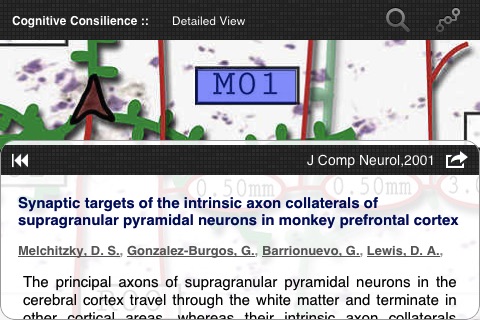
Interactions between the cerebral cortex, thalamus, and basal ganglia form the basis of cognitive information processing in the mammalian brain. Understanding the principles of neuroanatomical organization in these structures is critical to understanding the functions they perform and ultimately how the human brain works. We have manually distilled and synthesized hundreds of primate neuroanatomy facts into a single interactive visualization. The resulting picture represents the fundamental neuroanatomical blueprint upon which cognitive functions must be implemented. Within this framework we hypothesize and detail 7 functional circuits corresponding to psychological perspectives on the brain: consolidated long-term declarative memory, short-term declarative memory, working memory/information processing, behavioral memory selection, behavioral memory output, cognitive control, and cortical information flow regulation. Each circuit is described in terms of distinguishable neuronal groups including the cerebral isocortex (9 pyramidal neuronal groups), parahippocampal gyrus and hippocampus, thalamus (4 neuronal groups), basal ganglia (7 neuronal groups), metencephalon, basal forebrain and other subcortical nuclei. We focus on neuroanatomy related to primate non-primary cortical systems to elucidate the basis underlying the distinct homotypical cognitive architecture.
To display the breadth of this review, we introduce a novel method of integrating and presenting data in multiple independent visualizations: an interactive website (http://www.frontiersin.org/files/cognitiveconsilience/index.html) and standalone iPhone & iPad application. With these tools we present a unique, annotated view of neuroanatomical consilience (integration of knowledge).



